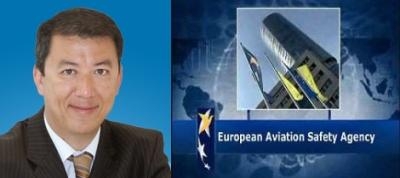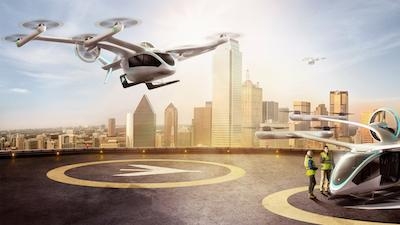Wed, Jul 03, 2019
Called The First Building Block To Enable Safe VTOL Operation And New Air Mobility In Europe
On July 2, 2019, EASA released what it says is the first building block to enable the safe operation of hybrid and electrical vertical take-off and landing (VTOL) aircraft.

"We are actively engaging with the industry to develop the right technical requirements to take benefit of the new technologies bringing safety and environmental benefits to the community," said EASA Executive Director Patrick Ky. "The establishment of a common set of conditions for the certification of these new concepts of vehicles will enable a fair competition on the European market as well as clarity for future manufacturers and their investors.”
The final Special Condition published Tuesday provides the framework for manufacturers to develop innovative VTOL aircraft. It applies to person-carrying VTOL heavier-than-air aircraft in the small category, with lift/thrust units used to generate powered lift and control. The small category covers aircraft with a passenger seating configuration of 9 or less and a maximum certified take-off mass up to 3,175 kg (7,000 pounds). The Special Condition was opened for public consultation in October 2018 and widely consulted with stakeholders worldwide. The certification objectives are made dependent on the type of operation in order to provide flexibility and proportionally and also to give a clear visibility to the industry of the objectives for their designs.

Two certification categories are introduced in this special condition namely Basic and Enhanced and are linked to the intended type of operations. A direct relationship between airworthiness and types of operations already exist, for example when certifying for VFR or IFR operations. Introducing this additional link provides greater scalability in setting safety objectives and allows to assign the highest safety levels of Category Enhanced to protection of third-parties when flying over congested areas and commercial air transport of passengers. The operational rules can then be built on demonstrated aircraft safety levels and adapted as necessary to local particularities. The Agency engaged with its international partners in order to work together towards achieving common standards.
The current regulatory framework has initially been designed for conventional fixed wing aircraft, rotorcraft, balloons and sailplanes. Propulsion was mostly provided by piston or turbine engines using fossil fuels. The introduction of new technologies and concepts of air transport requires to revisit this framework. The Agency is currently consulting with its Advisory Bodies on a new Rulemaking tasks (RMT.0731) to develop rules or amend existing ones, to address new technologies and operational air transport concepts, with the objective to be agile and to adapt the regulatory framework in line with Performance Based Regulations principles. The experience gained through the application of the VTOL special condition will feed into the Rulemaking process.
(Source: EASA news release. Images from file)
More News
From 2014 (YouTube Version): Innovative Aerodynamic Technologies Produce Game-Changing Results At the NBAA 2013 convention, ANN CEO and Editor-In-Chief, Jim Campbell had a chance t>[...]
“This plan opens insurance options to a much wider variety of Canadian aviators across the country who have otherwise had more challenges with securing insurance coverage... >[...]
Taxi The movement of an airplane under its own power on the surface of an airport (14 CFR section 135.100 [Note]). Also, it describes the surface movement of helicopters equipped w>[...]
Aero Linx: The Vertical Flight Society (VFS) The Vertical Flight Society, formerly the American Helicopter Society, is the non-profit technical society for the advancement of verti>[...]
Also: Sustainable Aircraft Test Put Aside, More Falcon 9 Ops, Wyoming ANG Rescue, Oreo Cookie Into Orbit Joby Aviation has reason to celebrate, recently completing its first full t>[...]
 Classic Aero-TV: Active Winglets -- Tamarack Aerospace Partners with Cessna
Classic Aero-TV: Active Winglets -- Tamarack Aerospace Partners with Cessna Aero-News: Quote of the Day (05.03.25)
Aero-News: Quote of the Day (05.03.25) ANN's Daily Aero-Term (05.03.25): Taxi
ANN's Daily Aero-Term (05.03.25): Taxi ANN's Daily Aero-Linx (05.03.25)
ANN's Daily Aero-Linx (05.03.25) Airborne 05.02.25: Joby Crewed Milestone, Diamond Club, Canadian Pilot Insurance
Airborne 05.02.25: Joby Crewed Milestone, Diamond Club, Canadian Pilot Insurance




